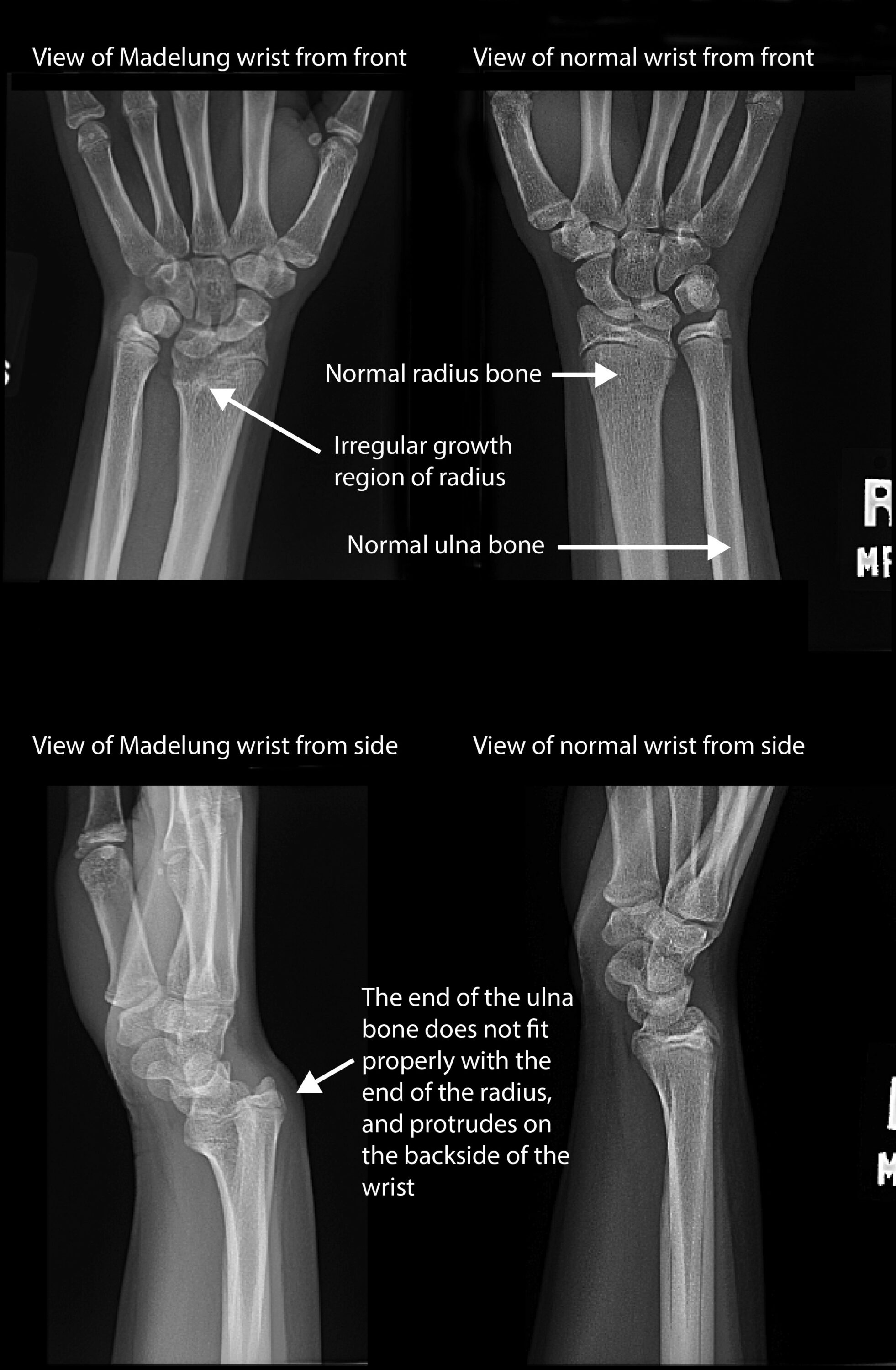Madelung Deformity
Raymond Liu, M.D.
Introduction
Madelung deformity is a condition where a portion of growth plate of the wrist does not grow properly. This causes deformity in the wrist. The condition often occurs in both wrists.

Anatomy
The radius and ulna bones connect with the bones of the hand to form the wrist joint. The portion of the radius which is closer to the ulna and on the same side as the palm does not grow properly in Madelung deformity. A structure named Vickers ligament is thought to be involved in disrupting this growth. The result is an angular deformity (tilt in the wrist joint) that worsens with growth. It also changes the relationship between the radius and ulna bones. Generally the end of the ulna bone fits into a groove in the end of the radius bone, but in more severe Madelung deformity the two bone no longer come together and there is a bump on the back of the wrist.
Cause
Madelung deformity can be associated with some rare conditions, such as Leri-Weill dyschondrosteosis and Turner syndrome. Many cases have no known cause. It is controversial whether Madelung deformity can result from trauma.
Symptoms
Many people with Madelung deformity do not have any symptoms, and simply notice a wrist deformity or have the condition discovered after an x-ray for an unrelated reason, such as a wrist injury. Some people do have wrist pain and wrist stiffness due to the Madelung deformity.
Doctor Examination
Your surgeon will assess the location of the pain, and the nature of the wrist deformity. Range of motion testing of the wrist is helpful in assessing how significant the condition is. Xrays are generally adequate for diagnosis. A CT or MRI may be used to better understand the deformity and or plan for surgery.
Nonsurgical Treatment
If there are no symptoms and the wrist is done growing simple observation is very reasonable. In cases of minor symptoms wrist strengthening with physical or occupational therapy can be helpful, as well as bracing.
Surgical Treatment
Surgery is considered if there is significant pain, stiffness or deformity. Multiple options may be considered.
In a growing child your surgeon may consider a procedure where the bone around the growth plate is removed, and a structure named Vickers ligament which is thought to restrain the growth plate is also released. Ideally, after this procedure the bone can grow more properly and even correct some of the deformity. However, in some cases further surgery may be necessary if the bone still grows improperly or does not have enough time to fully correct.
An operation to correct the wrist deformity could be considered in an older child or adult.. This can be done with an acute osteotomy, where the bone is cut and straightened at the same time, and then held in position with a plate. This oftentimes will require allograft, which is donor bone, which has been processed to minimize any potential for disease transmission. Sometimes two cuts are necessary, one to reshape the joint region and another to straighten the remainder of the bone.
Correction of the bone can also be done with an external fixator, where the bone is cut on the day of surgery and then gradually corrected in the weeks that follow.
In adults with chronic symptoms (present for a long time) correction of the bony deformity might not be advisable. In these cases options such as fusion (bones are bonded together to limit motion) and arthroplasty (joint replacement generally with plastic and metal) could be considered.
Overall, Madelung deformity is a complicated problem with multiple treatment options. Please talk to your surgeon to determine the best option for you.